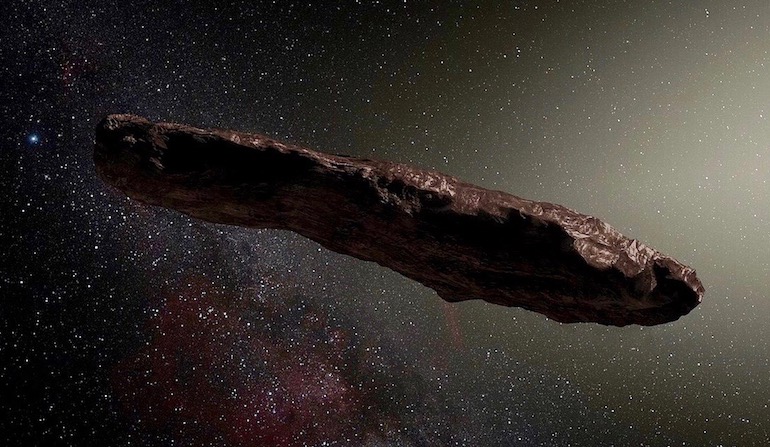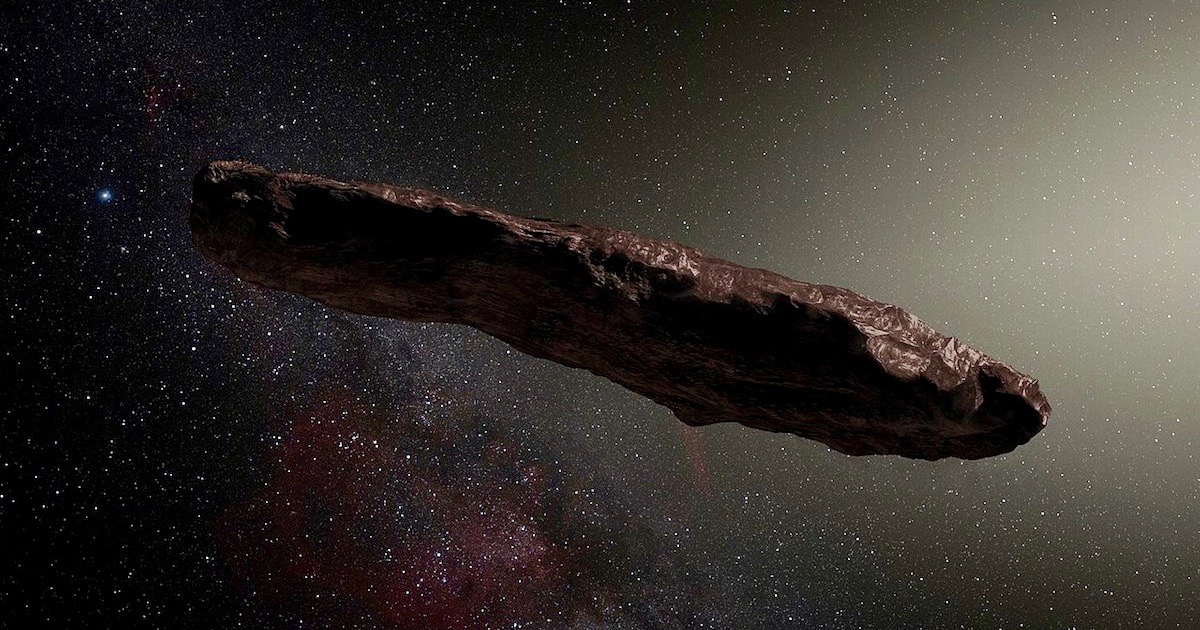 Physics, Earth & Space
Physics, Earth & Space
‘Oumuamua Revisited: Prospect of Intelligent Aliens Puts Materialists in a Pickle


There is a dilemma for scientists committed to materialism. On one hand, they require alien life, alien intelligence, elsewhere in the cosmos. It must exist, Earth cannot be rare, otherwise our seemingly fine-tuned home in our seemingly fine-tuned universe, apparently designed for carbon-based life remarkably like our own, must reflect not only apparent but genuine design. And on principle, that cannot be.
On the other hand, potentially “looking like a crank” by positing intelligent ETs could be career poison. Even more than most academics, scientists are very, very guarded about their prestige and image.
Observing ‘Oumuamua
So when the large, mysterious oblong object ‘Oumuamua was observed back in 2017, transiting across the Solar System, and Harvard astronomer Avi Loeb hailed it a peer-reviewed paper as potentially a “probe sent intentionally to Earth vicinity by an alien civilization,” it put folks like atheist science celebrity Neil deGrasse Tyson in a pickle. Celebrate, or mock? Many chose, prudently, to mock.
Diane Peters at Undark explains the problem posed by the (pickle-shaped, come to think of it) ‘Oumuamua. From “The Pitfalls of Searching for Alien Life”:
[W]hile scientists tossing around the idea of alien life may find a rapt public audience, they can also draw cynical, even hostile reactions from their fellow scientists, a response summed up by acclaimed physicist Neil deGrasse Tyson, who once quipped to CNN: “Call me when you have a dinner invite from an alien.”
This paradox has ripple effects. The threat of being written off as a kook can loom large for researchers, especially young ones. A lot of academics “won’t touch it with a 10-foot pole,” said Don Donderi, a retired associate professor of psychology at McGill University in Montreal who now teaches a non-credit course called “UFOs: History and Reality” in the school’s continuing education department.
[Avi] Loeb says many discoveries have their roots in theories that were initially dismissed. He thinks open-mindedness keeps scientific inquiry moving forward, while shutting down new theories “reduces the efficiency of science.”
NASA physicist Silvano Colombano maintains that the search for extraterrestrial intelligence has been limited by long-held assumptions and that the “general avoidance of the subject by the scientific community” means no one questions them. It’s a dilemma: scientists might look like cranks for posing questions about aliens, but we’ll also never know unless someone asks. [Emphasis added.]
A Familiar Situation
The situation is very familiar: “open-mindedness” versus “shutting down new theories,” a subject of inquiry denied on principle, where “we’ll…never know unless someone asks,” where scientists are cowed by the terror of “looking like a crank.” That’s the argument over intelligent design in a nutshell. The difference, as Michael Egnor observed here when ‘Oumuamua first came to the public’s excited notice, is that evidence for design in the cell far exceeds evidence for aliens:
If they found a tiny fraction of that evidence for design on ʻOumuamua, it would be the scientific discovery of the millennium. Yet we find design everywhere in living things, on an immense scale. There’s a breathtaking lack of self-awareness in the scientific community about intelligent design. Much of the most fascinating and cutting edge science in many fields is design science, but ideological blinders prevent good scientists like Dr. Loeb from acknowledging that, like space archeology, cellular archeology is science at its best.
No Dog in This Fight
Proponents of intelligent design don’t have a dog in the fight about extraterrestrial life. But as Episode 4 of Science Uprising makes clear, the Earth is very rare, the universe was fine-tuned for life, and evidence for a multiverse stands at zero:
When cosmologists like Lawrence Krauss say, “There is no evidence of design or purpose to our universe,” they are manifestly wrong. If complex life exists on another planet or planets, that would in itself count neither for nor against the theory of ID. If would simply indicate that life was designed not once but twice. Perhaps many times.
As the masked narrator of the Science Uprising series puts it in the episode, “Someone had you in mind. Someone had us all in mind.” Maybe that someone had ETs in mind, on many as yet unknown worlds. Why not?
Image: ʻOumuamua, by ESO/M. Kornmesser. Derivative: nagualdesign [CC BY-SA 4.0 ], via Wikimedia Commons.
